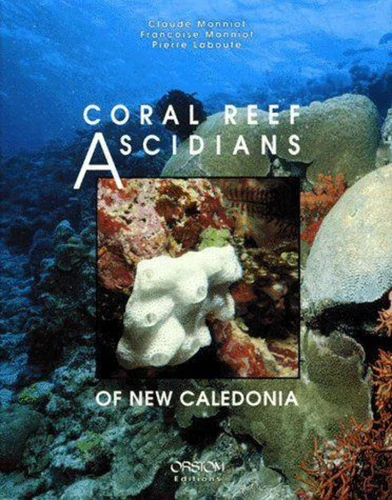Coral reef ascidians of New Caledonia
Par : , ,Formats :
- Paiement en ligne :
- Livraison à domicile ou en point Mondial Relay indisponible
- Retrait Click and Collect en magasin gratuit
- Réservation en ligne avec paiement en magasin :
- Indisponible pour réserver et payer en magasin
- Nombre de pages247
- PrésentationRelié
- Poids1.225 kg
- Dimensions21,9 cm × 27,7 cm × 2,4 cm
- ISBN2-7099-1050-0
- EAN9782709910507
- Date de parution01/08/1991
- Collectionfaune tropicale
- ÉditeurIRD Orstom
Résumé
Ascidians are common marine animals present on all types of substrata but abundant and highly diversified in warm oceans. They represent a large portion of the underwater pictures taken by divers of the ORSTOM center in Noumea.
One millimeter to some decimeters in size, cryptic or brightly coloured, motionless, often in the shade, ascidians are not well known, but are present everywhere. They are surprising not only in their variable shapes but also in their unique biological characteristics. They represent the boundary between invertebrates and vertebrates, although the adults look like stones or sponges.
With a beautiful selection of photographs, the authors discuss the essential anatomy, the modes of budding, the pigments, and the spicules. The ecological requirements are detailed and symbionts, parasites and predators are reviewed. The relationship with man concerns fouling species on ships, their use as food end as a source of pharmacological products.
The final section provides a key for the identification of the most common or spectacular species.
Ascidians are common marine animals present on all types of substrata but abundant and highly diversified in warm oceans. They represent a large portion of the underwater pictures taken by divers of the ORSTOM center in Noumea.
One millimeter to some decimeters in size, cryptic or brightly coloured, motionless, often in the shade, ascidians are not well known, but are present everywhere. They are surprising not only in their variable shapes but also in their unique biological characteristics. They represent the boundary between invertebrates and vertebrates, although the adults look like stones or sponges.
With a beautiful selection of photographs, the authors discuss the essential anatomy, the modes of budding, the pigments, and the spicules. The ecological requirements are detailed and symbionts, parasites and predators are reviewed. The relationship with man concerns fouling species on ships, their use as food end as a source of pharmacological products.
The final section provides a key for the identification of the most common or spectacular species.


